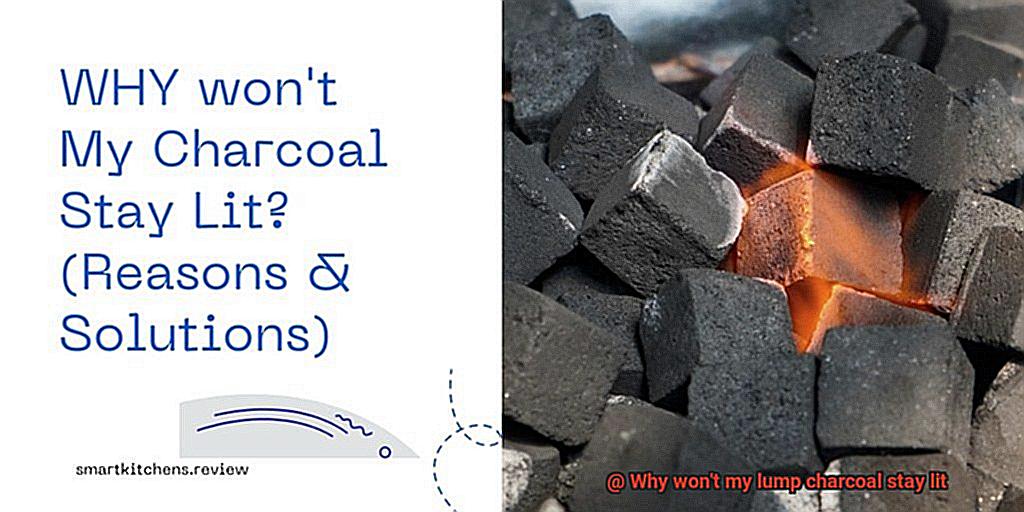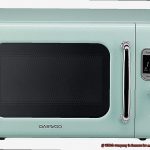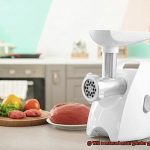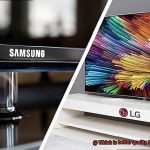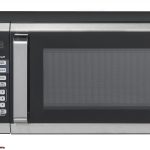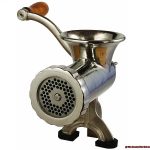Hey there, grill masters and pit enthusiasts. We’ve all been there: you’re ready to fire up your grill and get cooking, but your lump charcoal just won’t stay lit. It’s a frustrating problem that can leave you feeling like you’ve failed before you even got started. But don’t worry – we’ve got your back.
First things first, let’s talk about what makes lump charcoal different from briquettes. Lump charcoal is made solely from hardwood, which means it burns hotter and faster than its compressed sawdust counterpart. While this is great for achieving that perfect sear on your steak, it also means that lump charcoal requires more attention and care when it comes to lighting and maintaining a consistent burn.
In this post, we’ll dive into the most common reasons why your lump charcoal won’t stay lit – from airflow issues to moisture problems to inconsistent lighting methods. And of course, we’ll offer up some tried-and-true tips for getting your charcoal going strong and keeping it burning throughout your cook.
So if you’re tired of struggling with stubborn lump charcoal, grab your apron and let’s get grilling.
Contents
What is Lump Charcoal?
Lump charcoal is a natural fuel source that has become increasingly popular among grillers. Made by burning wood in the absence of oxygen, lump charcoal is created by removing impurities and moisture, leaving behind small pieces of pure carbon. These pieces, known as lumps, are not uniform in size or shape, which can make it more challenging to use than briquettes.
Despite its non-uniformity, lump charcoal has many advantages over briquettes. For one, it burns hotter than briquettes, making it an ideal fuel source for searing steaks and cooking food quickly. Additionally, it produces less ash than briquettes, which means less cleanup after grilling.
However, because of its variable composition, lump charcoal requires extra care to properly light and maintain a consistent temperature throughout the cooking process. Nevertheless, many grillers prefer lump charcoal for its unique flavor and natural composition.
Briquettes, on the other hand, are easier to light and control during cooking due to their uniformity in size and composition. However, they may not burn as hot as lump charcoal and tend to produce more ash.
When deciding between lump charcoal and briquettes, it ultimately depends on your personal preferences and the type of grilling you plan on doing. If you’re looking for high heat output and a unique flavor profile, lump charcoal may be the way to go. But if you want something that’s easy to control during cooking and produces less ash, briquettes may be a better choice.
Reasons Why Lump Charcoal Won’t Stay Lit
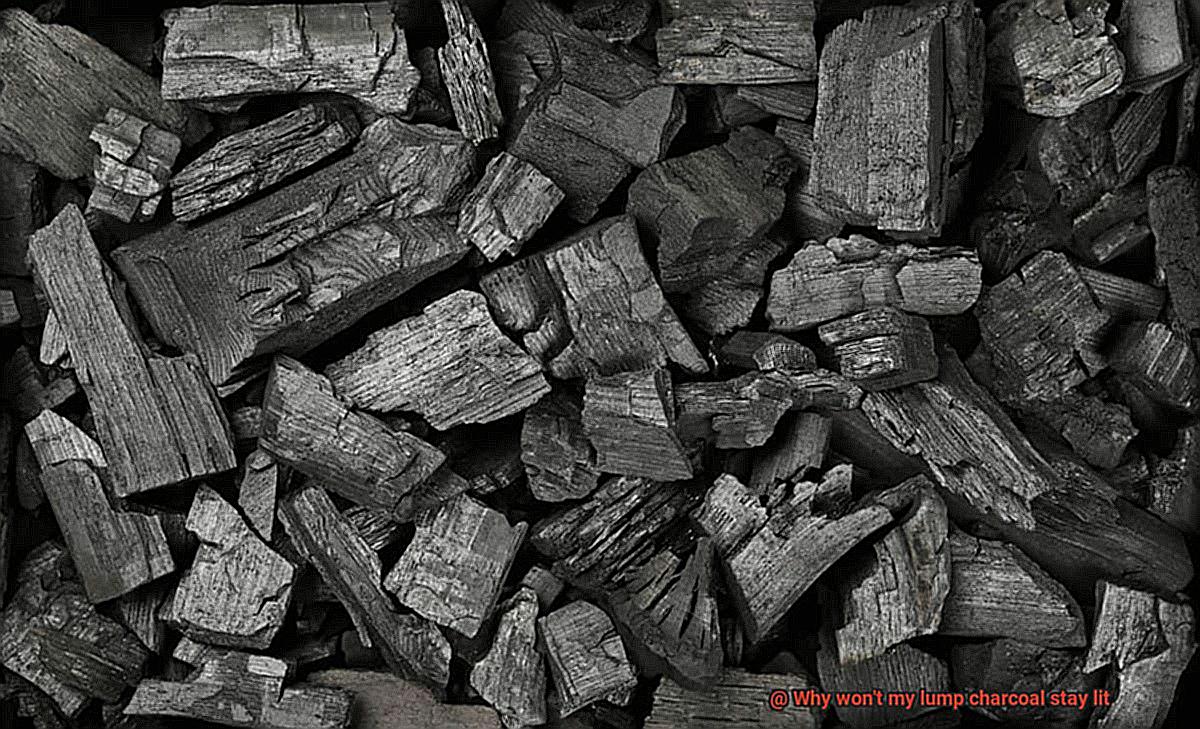
But fear not. There are several reasons why this might be happening, and understanding them can help you avoid these issues and have a successful grilling experience every time.
Lack of Airflow
Charcoal needs oxygen to burn, and if there’s not enough airflow in your grill, the fire will go out quickly. This is especially true if your grill is too tightly sealed or if the vents are closed. To avoid this problem, make sure your grill has proper ventilation and that the vents are open to allow air to flow through the charcoal.
Quality of Charcoal
Not all lump charcoal is created equal, and lower quality charcoal may contain more dust and smaller pieces that can clog airflow and prevent consistent burning. To ensure a successful grilling experience, invest in high-quality lump charcoal made from sustainable sources.
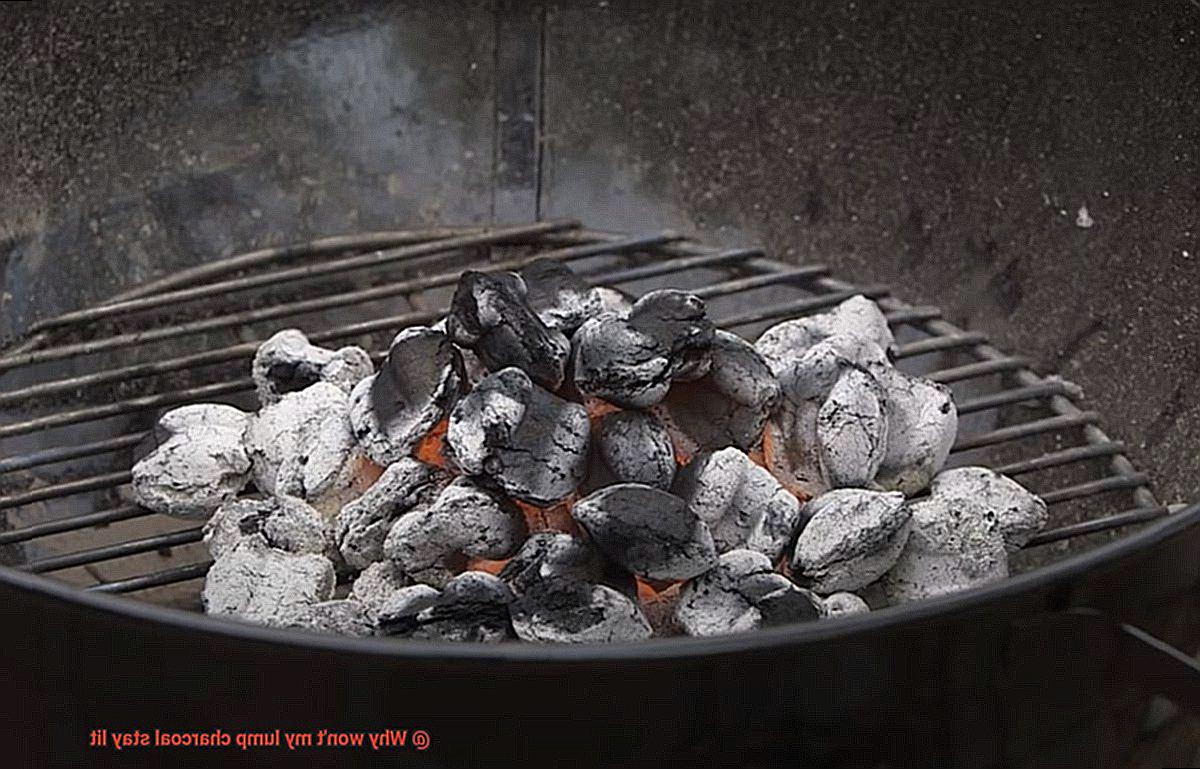
Use of Accelerants
While using lighter fluid or other accelerants may seem like an easy way to light your charcoal, it can cause issues with maintaining the fire. These substances can lead to uneven burning, flare-ups, and even potential dangers. Instead, use a chimney starter or electric starter to light your charcoal safely and evenly.
Moisture
Charcoal needs to be completely dry before it can be used for grilling. If it has been exposed to moisture or humidity, it will be difficult to light and won’t stay lit for very long. To avoid this problem, store your charcoal in a dry place and always check it before using it.
Insufficient Charcoal
Using too little charcoal can also cause problems with maintaining a fire. Make sure that you’re using enough charcoal for the size of your grill and the amount of food you’re cooking. It’s better to have too much than too little because you can always save the unused charcoal for your next grill session.
Using the Right Type of Charcoal
The secret to achieving a successful and delicious BBQ experience lies in using the right type of charcoal. But with so many options available, it can be overwhelming to choose the right one. Fear not, we’ve got you covered.
Let’s start by exploring the two main types of charcoal: lump and briquette. Lump charcoal is the go-to choice for grill enthusiasts as it burns hotter and faster than briquettes, producing less ash and smoke. However, not all lump charcoal is created equal. To ensure that your charcoal stays lit, it’s important to choose a high-quality brand that is consistent in size and has minimal moisture content.
When it comes to lump charcoal, size matters. Large pieces will burn longer than small pieces, so aim for chunks that are roughly the same size. And don’t forget to preheat the charcoal before adding it to the grill – this will help it light more evenly and stay lit longer, resulting in perfectly cooked food.
Briquette charcoal offers consistency in shape and size, but be wary of those with added chemicals like limestone or borax. Look for natural briquettes that are made with minimal additives for a cleaner burn. These briquettes may take longer to light, but they’ll provide a steady heat source for extended cooking times.
In summary, choosing the right type of charcoal is crucial for achieving a successful BBQ experience. Here are some key takeaways to keep in mind:
- Opt for high-quality lump charcoal or natural briquettes with minimal additives.
- Choose chunks of lump charcoal that are consistent in size and have minimal moisture content.
- Preheat your charcoal before adding it to the grill for an even burn.
- Consider using briquette charcoal for extended cooking times.
Ensuring Adequate Airflow in Your Grill
Grilling is an art form, and like any art, it requires skill, patience, and technique to master. One vital aspect of grilling that often goes overlooked is ensuring adequate airflow in your grill. Without proper ventilation, your food won’t cook evenly, and you’ll miss out on that perfect sear and smoky flavor we all love. So, how do you ensure adequate airflow in your grill? Here are some expert tips to get you started:
Check Your Vents
The first step in ensuring adequate airflow is to check your grill’s vents. Make sure they’re open and unobstructed. If they’re clogged with debris or grease, it can restrict the flow of air and cause your coals to burn out too quickly.
Consider the Placement of Your Charcoal
The way you place your charcoal can also impact airflow. If you’re using a charcoal chimney to light your lump charcoal, make sure to distribute the coals evenly and avoid packing them too tightly. This allows air to circulate freely through the coals and keeps them burning consistently.
Know Your Grill
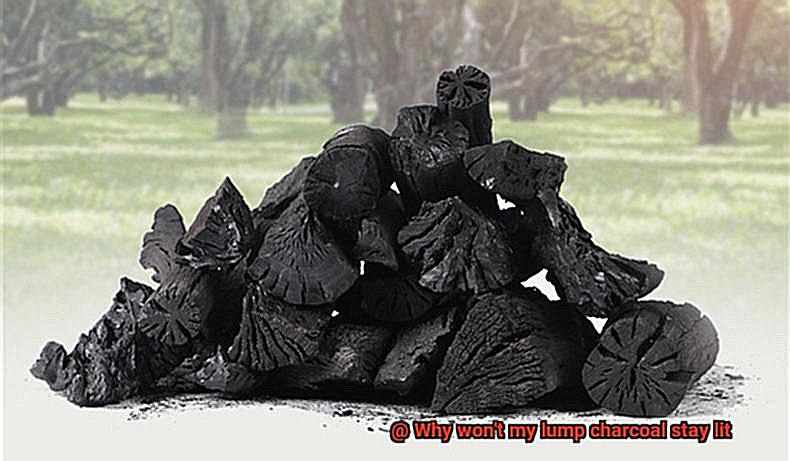
Different grills require different levels of airflow, so it’s essential to know your equipment. For instance, if you’re using a kamado-style grill, you’ll need to adjust the vents carefully to maintain a consistent temperature. On the other hand, if you’re using a traditional charcoal grill, you may need to adjust the height of the charcoal grate to ensure adequate airflow.
Keep Your Grill Clean
A dirty grill can impede airflow and cause uneven cooking. Therefore, it’s crucial to clean your grill regularly, especially after each use. Remove any ash or debris from the bottom of the grill and clean out the vent openings.
Avoiding Moisture Exposure
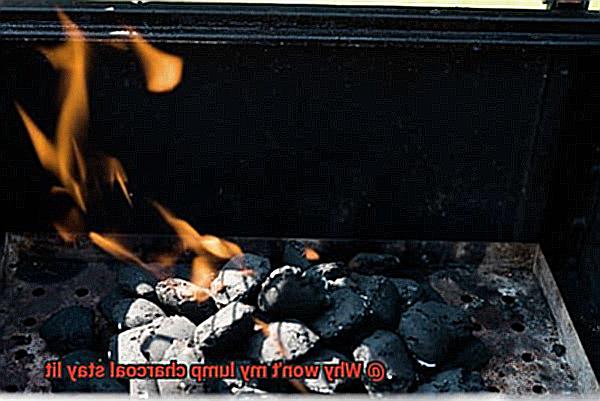
Firstly, it’s essential to store your lump charcoal in a dry place. Whether you choose an airtight container or a sealed bag, it’s crucial to prevent moisture from seeping in and ruining the charcoal’s potential for success. Avoid leaving your charcoal outside where it can be exposed to rain or snow – soggy charcoal is never fun.
For those who want to take their grilling game up a notch, using a chimney starter is an excellent option. This handy device helps dry out any moisture in the charcoal while also ensuring that it reaches the necessary temperature for ignition. It’s a win-win situation.
Lastly, investing in higher quality lump charcoal can make all the difference. Quality brands often have lower moisture content, which means they are easier to light and maintain a consistent flame. So next time you’re at the store, don’t hesitate to splurge on good quality charcoal.
Using Enough Charcoal to Maintain a Fire
Picture this: it’s a beautiful summer day and you’re ready to fire up the grill for a delicious cookout. You’ve got your meat, your seasoning, and your charcoal – but wait, are you using enough charcoal? Don’t let the frustration of a quickly dying fire ruin your day. As an expert in the field, I’m here to guide you through the art of using enough charcoal to maintain a steady fire.
First things first, let’s talk quantity. The amount of charcoal you’ll need depends on a few factors such as the size of your grill and the type of food you’re cooking. As a general rule, plan on using 30-40 briquettes or 6-8 pounds of lump charcoal for every hour of cooking time. However, be sure to adjust accordingly if you’re grilling larger cuts of meat or using a bigger grill.
Now that you know how much to use, let’s focus on placement. It’s important to spread the charcoal evenly across the bottom of the grill, creating a single layer. This ensures that all of the charcoal is used up during the cooking process and allows for consistent heat distribution.
As you cook, keep an eye on your fire and add new charcoal as needed throughout the process. Don’t wait until your fire has completely burned out before adding more. Instead, be proactive and add new charcoal as soon as you notice the fire starting to die down. You can do this by either placing new charcoal on top of the existing coals or by lighting a small pile in a separate area of the grill before adding it in.
Troubleshooting Tips and Tricks for Lighting Lump Charcoal
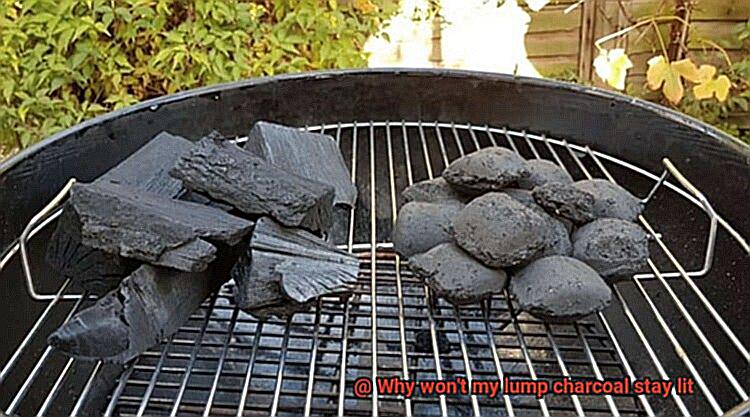
It can be challenging to get the right balance of oxygen and temperature to keep your fire burning bright. However, with a few troubleshooting tips and tricks, you can master the art of lighting lump charcoal and ensure that your fire stays lit throughout your cookout.
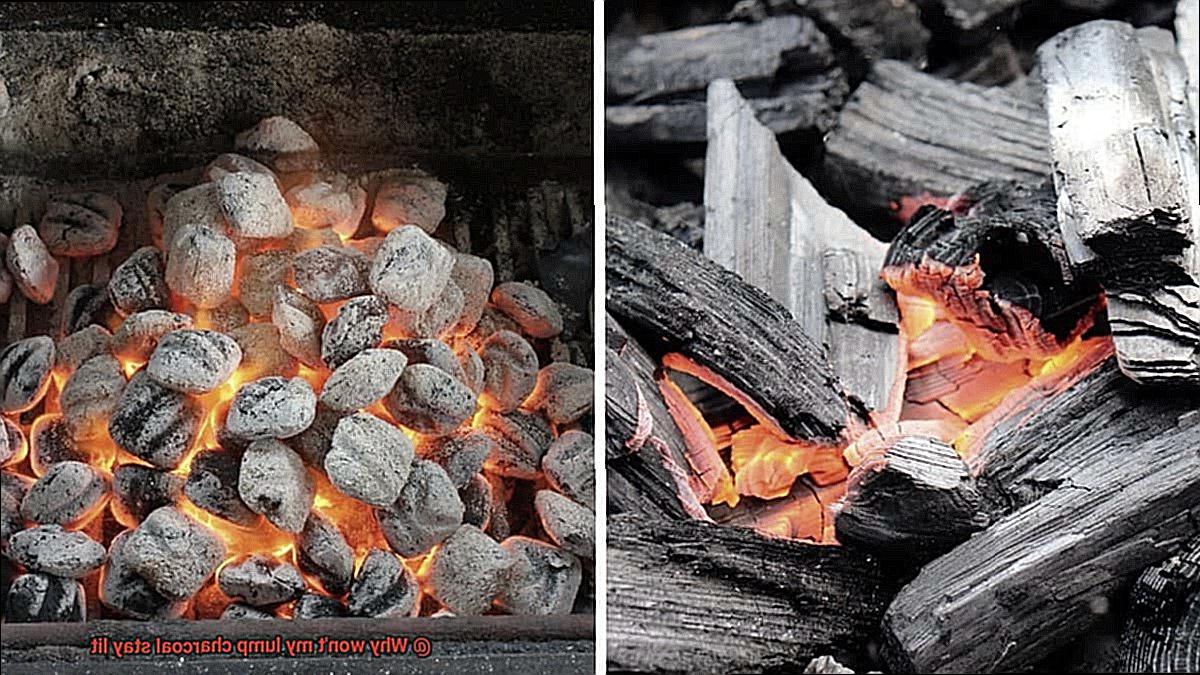
Start with the Right Amount of Charcoal
Using the right amount of charcoal is crucial in keeping your fire burning bright. Using too little charcoal results in a weak fire that will quickly burn out, while using too much charcoal makes it difficult to light up. To determine how much charcoal you need, consider the size of your grill and the amount of food you plan on cooking. A general rule of thumb is to use one pound of charcoal per inch of grill diameter.
Use a Chimney Starter
A chimney starter is an excellent tool for lighting lump charcoal quickly and efficiently. Fill it with charcoal, place it over a few crumpled pieces of newspaper, and light the paper. The heat from the burning paper will ignite the charcoal, and in 10 to 15 minutes, your coals will be ready to use. This method is safer than using lighter fluid and ensures that your fire burns evenly.
Avoid Using Lighter Fluid
While lighter fluid is a popular way to ignite charcoal quickly, it can cause problems if used improperly. If you use too much lighter fluid, your fire may become too hot or flare up, which can lead to uneven cooking or burnt food. Additionally, lighter fluid can leave a chemical taste on your food. Instead of using lighter fluid, consider using natural fire starters like wood chips or kindling.
Arrange the Charcoal Properly
Once your charcoal is lit, it’s essential to arrange it correctly on the grill. Spread the coals out evenly across the bottom of the grill, leaving some space around the edges for airflow. This will help ensure even heating and prevent hot spots. If you are cooking food that requires direct heat, like steaks or burgers, arrange the charcoal in a single layer. For indirect heat, like ribs or chicken, create a two-zone fire by placing the coals on one side of the grill.
Control the Airflow
The amount of oxygen that reaches your charcoal can have a significant impact on how long it stays lit. If you’re having trouble keeping your charcoal lit, try adjusting the air vents on your grill to control the airflow. Opening the vents will increase the oxygen flow and help keep your fire burning, while closing them will reduce airflow and slow down the burning process.
ieRNhjBIN_M” >
Conclusion
In summary, don’t let your charcoal woes dampen your grilling game. There are a plethora of reasons why your lump charcoal won’t stay lit, but fret not – by understanding the nuances of this fuel source, you can overcome these challenges and achieve flawless results every time.
Firstly, it’s crucial to differentiate between lump charcoal and briquettes and select the appropriate type for your grilling needs. From there, common culprits for lackluster performance include poor airflow, subpar quality charcoal, accelerant usage, moisture exposure, and inadequate amounts of fuel. To sidestep these obstacles like a pro, ensure that your grill has ample ventilation, invest in high-quality lump charcoal sourced sustainably, leverage a chimney or electric starter to light your coals evenly without hazardous fluids or chemicals, store your coal in a dry spot to avoid water damage, and use enough charcoal for the size of your grill and food portions.
Additionally, optimal lighting and maintenance practices involve using the right amount of charcoal (not too little nor too much), arranging coals appropriately on the grill for even heating (no hotspots or cold zones.), controlling airflow via adjusting air vents as necessary (too much oxygen = flames galore).

